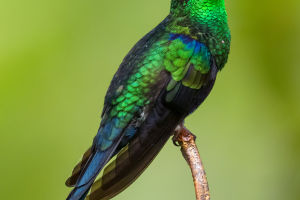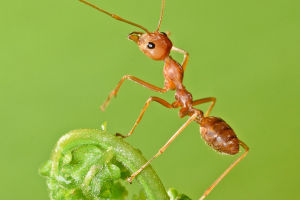The visual system of birds stands out as one of the most remarkable in the animal kingdom, showcasing a level of acuity that surpasses that of most other creatures.
This advanced visual capability is crucial for their survival, allowing them to navigate obstacles in flight, precisely capture prey, and identify food sources with remarkable accuracy.
While the visual acuity varies among different bird species, overall, avian vision offers significant advantages in color recognition, motion detection, and visual field range.
First and foremost, birds possess an extraordinary ability to recognize colors. Unlike humans, who have trichromatic vision (three types of cone cells in the retina), most birds have tetrachromatic vision, thanks to an additional type of cone cell that allows them to perceive ultraviolet light.
This four-cone system significantly enhances their color discrimination, enabling them to see a broader spectrum of colors and detect subtle differences that are invisible to the human eye.
For instance, pigeons, with their ability to see ultraviolet light, can distinguish more colors than humans and detect variations in the ultraviolet spectrum. This heightened color vision plays a crucial role in their daily activities.
Birds use their ability to see ultraviolet light to identify ripe fruits and healthy feathers, which are important for finding food and selecting mates. The ultraviolet patterns on fruits or feathers can signal ripeness or health status, aiding birds in their survival and reproductive strategies.
In addition to their exceptional color vision, birds also excel in motion detection. Their visual systems are highly sensitive to movement, with many species able to perceive more than 100 flashes of light per second.
In contrast, humans can only detect around 24 flashes per second. This superior motion sensitivity provides birds with a distinct advantage when hunting or evading predators. For example, raptors such as eagles and falcons can detect and focus on small prey from impressive heights.
Their ability to spot minute movements from hundreds of meters away and their swift response in diving to capture prey is directly linked to their advanced motion detection.
Smaller birds like pigeons and sparrows also benefit from this heightened sensitivity, using it to avoid predators and navigate through their environments effectively.
Birds also exhibit remarkable advantages in their visual field range. The placement of their eyes on the sides of their heads grants them an exceptionally wide field of view. Small birds such as sparrows can see up to 340 degrees around them, covering nearly the entire surrounding area.
This broad visual field allows birds to be vigilant about potential threats or opportunities without needing to move their heads. The ability to monitor almost their entire environment at once is crucial for detecting predators, locating food, and interacting with other birds.
Among birds, raptors are particularly renowned for their extraordinary vision. The visual acuity of eagles, for instance, is often cited as a benchmark for avian visual systems. Eagles have an incredibly high density of cone cells in their retinas, enabling them to spot prey from hundreds of meters or even kilometers away.
Research indicates that eagles possess visual acuity that is four to eight times better than that of humans, allowing them to discern fine details at great distances. This exceptional vision not only facilitates effective hunting but also aids in avoiding obstacles and other birds while soaring at high altitudes.
Night vision is another fascinating aspect of avian visual capabilities. While most birds are diurnal, some nocturnal species, such as owls, possess exceptional night vision. Owls have large eyes with a high density of photoreceptor cells in their retinas, allowing them to see clearly in low-light conditions.
Their large eyes are adapted to maximize the amount of light entering, enhancing their ability to hunt and navigate in darkness. Furthermore, owls have the unique ability to rotate their heads nearly 270 degrees, which expands their field of vision and enables them to monitor their surroundings even in the dark.
By studying the visual systems of birds, scientists can gain deeper insights into the diversity of nature and potentially draw inspiration for advancements in human visual technology and scientific research.
The exploration of avian vision not only enhances our understanding of these remarkable creatures but also opens doors to innovative applications in technology and medicine.


